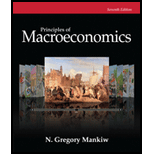
Concept explainers
What distinguishes money from other assets.
Explanation of Solution
Money is anything which is accepted as payment to the goods and services from a market. It acts as a medium of exchange, store of value, unit of account, and so forth. Any commodity that is being accepted by an economy for this purpose is considered as money. It is usually metal coins and paper currencies.
The assets are anything that can be tangible or intangible which can be owned and controlled in order to produce value. The companies hold these to produce a positive value in the economy. The buildings, machineries and the capital are the main assets of an economy.
Thus, it can be easily concluded that both money and assets are valuables and both have some value. However, the main difference between the money and assets is in the case of liquidity. Liquidity is the easiness in buying and selling of the assets in the market without many changes in the price. In this regard, money is the most liquid one than the other assets. All other assets widely vary in their liquidity rate and this is the main case that distinguishes money from all other assets.
Concept introduction:
Money: Money is any item that is accepted as payment for the goods and services provided by an economy.
Assets: Assets are any tangible or intangible items in an economy that can be owned and controlled and 6are used for producing value.
Want to see more full solutions like this?
Chapter 16 Solutions
Principles of Macroeconomics (MindTap Course List)
 Economics Today and Tomorrow, Student EditionEconomicsISBN:9780078747663Author:McGraw-HillPublisher:Glencoe/McGraw-Hill School Pub Co
Economics Today and Tomorrow, Student EditionEconomicsISBN:9780078747663Author:McGraw-HillPublisher:Glencoe/McGraw-Hill School Pub Co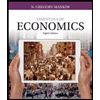 Essentials of Economics (MindTap Course List)EconomicsISBN:9781337091992Author:N. Gregory MankiwPublisher:Cengage Learning
Essentials of Economics (MindTap Course List)EconomicsISBN:9781337091992Author:N. Gregory MankiwPublisher:Cengage Learning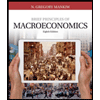 Brief Principles of Macroeconomics (MindTap Cours...EconomicsISBN:9781337091985Author:N. Gregory MankiwPublisher:Cengage Learning
Brief Principles of Macroeconomics (MindTap Cours...EconomicsISBN:9781337091985Author:N. Gregory MankiwPublisher:Cengage Learning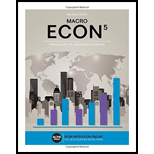

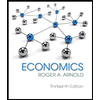 Economics (MindTap Course List)EconomicsISBN:9781337617383Author:Roger A. ArnoldPublisher:Cengage Learning
Economics (MindTap Course List)EconomicsISBN:9781337617383Author:Roger A. ArnoldPublisher:Cengage Learning





